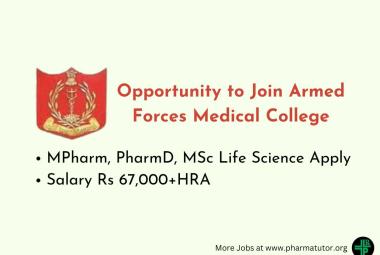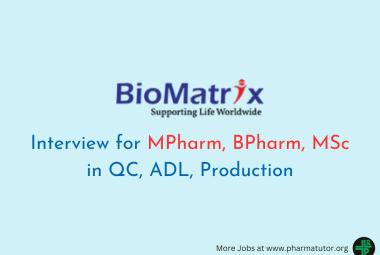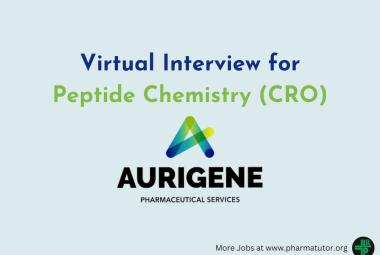Question Paper of Microbiology for Jharkhand Public Service Commission (JPSC) - 2013
1.Viruses nthat are infected and reproduced in bacteria are called
(A) zoophagia
(B) phytophagia
(C) bacteriophagia
(D) mycobacteria
[adsense:336x280:8701650588]
2.Which of the following is not a eucaryote?
(A) Alga
(B) Bacterium
(C) Fungus
(D) Protozoa
3.Which of the following is not present in a eucaryotic cell?
(A) Nucleolus
(B) Mitochondrion
(C) Golgi body
(D) Peptidoglycan
4.Which of the following is not a kingdom in the classification of living organisms?
(A) Monera
(B) Protista
(C) Fungus
(D) Alga
5.Which of the following is not true for yeasts?
(A) Yeasts are eucaryotic
(B) Yeasts are multicellular
(C) Yeasts are reproduced by asexual and sexual processes
(D) None of the above .
6.Millions of bacterial cells packed tightly together, arising from a single bacterium, are called
(A) colony
(B) pure culture
(C) mixed culture
(D) vaccine
7.The scientist who developed the concept of chemotherapy was
(A) Paul Ehrlich
(B) Elie Metchnikoff
(C) Louis Pasteur
(D) Robert Koch
8.Which of the following is not a contribution of Robert Koch in the field of microbiology?
(A) Development of pure culture technique
(B) Discovery of causative agent of anthrax
(C) Discovery of causative agent of tuberculosis
(D) Development of immuni-zation technique
9. One micrometre (urn) is equivalent to
(A) 0 .001 mm
(B) 0. 01 mm
(C) 0.1 mm
(D) 1000 .0 mm
10. Which of the following is not a characteristic of plasmids?
(A) Extrachromosomal, linear DNA molecules
(B) Capability of autonomous replication
(C) Capability of integration with chromosomes
(D) Conferring special character¬istics such as toxigenicity to cells
Go to "Next Page" for more questions...
Subscribe to Pharmatutor Job Alerts by Email
11. Which of the following is the most useful property of a microscope?
(A) Magnification
(B) Resolving power
(C) Phase contrast
(D) All of the above
12. Which of the following micro-scopic techniques is used to reveal surface topography of a specimen?
(A) Bright-field microscopy
(B) Fluorescence microscopy
(C) Phase-contrast microscopy
(D) Scanning electron
microscopy
13. Which of the following is a basic dye?
(A) Eosin
(B) Methylene blue
(C) Eosinate .of methylene blue
(D) None of the above
14. Okazaki fragments are produced during
(A) replication
(B) translation
(C) transcription
(D) All of the above
15. Which of the following is not a function of bacterial capsules?
(A) To protect against temporary drying by binding water molecules
(B) To inhibit the engulfment of bacteria by WBCs
(C) To promote attachment of bacteria to surfaces
(D) To prevent the cell from expanding and bursting
16. Which of the following is not a component of peptidoglycan?
(A) iV-acetylmuramic acid
(B) IV-acetylglucosamine
(C) Teichoic acids
(D) Tetrapeptide
17. Nutritionally E. coli can be characterized as
(A) chemotrophic
(B) organotrophic
(C) heterotrophic
(D) All of the above
18. Which of the following com-pounds is found in the spores but not in vegetative cells?
(A) Muramic acid
(B) Mycolic acid
(C) Dipicolinic acid
(D) Teichoic acid
19. Which of the following serves as a source of carbohydrates in bacteriological media?
(A) Agar
(B) Beef extract
(C) Peptone
(D) Yeast extract
20. An example of inorganic solidifying agent for bacterio-logical media is
(A) agar
(B) gelatin
(C) silica gel
(D) All of the above
21. 10 bacterial cells were inoculated into a flask of liquid culture medium and incubated. At the end of the incubation period, the bacterial population increased from 10 to 320. Assuming that the bacteria are reproduced by binary fission and that no bacterial cell died, the number of generations that took place is
(A) 4
(B) 5
(C) 6
(D) 8
22. The manner in which bacterial growth is expressed using microscopic method is
(A) colony-forming unit
(B) dry weight of cells in mg/ml
(C) number of cells per ml
(D) optical density
23. Which of the following culture media is used to provide selective growth of gram-negative intes-tinal bacteria such as Salmonella and Shigella?
(A) Fluid thioglycolate
(B) Nutrient agar
(C) MacConkey’s agar
(D) Soybean casein digest agar
24. Which of the following methods is best suited for selecting endospore-forming bacteria from a mixed culture?
(A) Incubation at high temperature, e.g., 55 °C
(B) Heating the mixed culture to 80 °C for 10 minutes before inoculation
(C) Inoculating into a low-pH medium
(D) All of the above
25. In which of the following methods for isolating pure cul¬tures, can subsurface colonies develop?
(A) Streak-plate method
(B) Roll-tube method
(C) Pour-plate method
(D) Spread-plate method
Go to "Next Page" for more questions...
Subscribe to Pharmatutor Job Alerts by Email
26. Bacteria can be preserved by covering the growth on agar slant with which oil?
(A) Sterile turpentine oil
(B) Sterile peanut oil
(C) Sterile liquid paraffin oil
(D) All of the above
27. The inorganic portion of an enzyme is called
(A) apoenzyme
(B) coenzyme
(C) cofactor
(D) holoenzyme
28. Lyase, a major class of enzymes, catalyses which of the following reactions?
(A) Electron transfer
(B) Transfer of functional groups
(C) Formation of bonds
(D) None of the above
29. In which of the following mechanisms for the regulation of enzyme activity, the first metabolite of a pathway participates as effector molecule?
(A) Energy-link control
(B) Feedback inhibition
(C) Precursor activation
(D) General process
30. In which of the following mechanisms for the regulation of enzyme activity, participation of effector molecule is not required?
(A) Energy-link control
(B) Feedback inhibition
(C) Precursor activation
(D) General process
31. The operon consists of
(A) structural gene
(B) operator gene
(C) repressor gene
(D) All of the above
32. Which of the following is not true for bacterial genomes?
(A) Chromosomes are diploid
(B) Chromosomes consist of circular DNA molecule
(C) DNA molecules are double- stranded
(D) Consist of single chromo¬some
33. Which of the following enzymes removes the RNA primer during replication of DNA?
(A) DNA polymerase I
(B) DNA polymerase II
(C) DNA polymerase III
(D) RNA polymerase
34. DNA polymerase III has which of the following activities?
(A) 3-5' nuclease activity
(B) 5'-3' nuclease activity
(C) 3 '-5' polymerase activity
(D) 5-3' polymerase activity
35. DNA polymerase I has which of the followifig activities?
(A) 3-5' nuclease activity
(B) 5'-3' nuclease activity
(C) 5'-3' polymerase activity
(D) None of the above
36. Removal of the phosphate group from the nucleotide yields
(A) deoxyribose sugar
(B) pyrimidine base
(C) purine base
(D) Nucleoside
37. Which of the following is not true referring to chromosome of a typical bacterium?
(A) Chromosome is circular
(B) Chromosome comprises of double-stranded DNA
(C) Double helix has free ends
(D) Chromosome is supercoiled
38. Large DNA molecules of eucaryotes have how many of the following origins, i.e., points of initiation for replication?
(A) 0
(B) 1
(C) 10
(D) 100
39. If a polypeptide chain contains 300 amino acids, then the gene coding for this polypeptide chain must contain how many of the following base pairs?
(A) 100
(B) 300
(C) 900
(D) 1
40. If a gene coding for a polypeptide chain contains 300 nucleotide base pairs, then the polypeptide chain contains how many of the following amino acids?
(A) 900
(B) 300
(C) 100
(D) 1
Go to "Next Page" for more questions...
Subscribe to Pharmatutor Job Alerts by Email
41. The substitution of adenine for guanine in the sequence of a gene is termed as which of the following types of mutation?
(A) Insertion
(B) Deletion
(C) Transversion
(D) None of the above
42. The addition of one or more nucleotides in a gene is termed as which of the following types of mutation?
(A) Transition
(B) Transversion
(C) Deletion
(D) None of the above
43. The units of DNA which move from one DNA molecule to another are called
(A) viruses
(B) plasmids
(C) transposons
(D) All of the above
44. Which of the following is not true for an Hfr x F" cross?
(A) F factor becomes integrated into chromosome
(B) Frequency of recombination is high
(C) Transfer of F factor is low
(D) None of the above
45. Which of the following mecha-nisms of genetic recombination was discovered by Zinder and Lederberg?
(A) Transformation
(B) Conjugation
(C) Transduction
(D) Mutation
46. For DNA synthesis, which of the following is required?
(A) Primer
(B) Promoter
(C) Lipase
(D) All of the above
47. Which of the following is not gram-negative?
(A) Pseudomonas
(B) Enterobacter
(C) Rickettsia
(D) Clostridium
48. Which of the following is not gram-positive?
(A) Vibrio
(B) Staphylococcus
(C) Bacillus
(D) Mycobacterium
49. The distinctive features—
(I) Cell slope is curved
(II) Cells have polar flagella
(III) Cells are oxidase-positive
are of which of the following bacterial families?
(A) Rhizobiaceae
(B) Pseudomonadaceae
(C) Vibrionaceae
(D) Enterobacteriaceae
50. Which of the following families is noted for producing organic acids as a result of fermentative metabolism?
(A) Bacteroidaceae
(B) Pasteurellaceae
(C) Vibrionaceae
(D) Enterobacteriaceae
51. The category of bacteria comprising of methanogenic bacteria, extreme halophiles and thermoacidophiles are grouped under which of the following?
(A) Eubacteria
(B) Archaebacteria
(C) Cyanobacteria
(D) All of the above
52. Which of the following is not true for extreme halophile?
(A) Chemoorganotrophic,
require 17%-23% NaCl
(B) Gram-negative
(C) Anaerobic
(D) Colonies are red to orange
53. Which of the following is not true for thermoacidophile?
(A) Aerobic
(B) Gram-positive
(C) Able to grow conditions under acidic
(D) Able to grow temperature under high
54. Which of the following genera in bacteriology has been divided into largest number of species?
(A) Spirochaeta
(B) Escherichia
(C) Corynebacterium
(D) Streptomyces
55. Which of the following species of Streptomyces produces the antibiotic amphotericin B?
(A) S. nodosus
(B) S. venezuelae
(C) S. fradiae
(D) S. rimosus
Go to "Next Page" for more questions...
Subscribe to Pharmatutor Job Alerts by Email
56. Which of the following is not true for fungi?
(A) Eucaryotic
(B) Aerobic
(C) Use inorganic carbon
(D) Cell wall composed of chitin
57. Which of the following is not true for fungi?
(A) Eucaryotic
(B) Optimum pH for growth is 3 • 8-5 • 6
(C) Sensitive to penicillin
(D) Do not require light
58. Which of the following is not a bacterium?
(A) Streptomyces
(B) Actinomyces
(C) Dermatophilus
(D) None of the above
59. Which of the following is not a fungus?
(A) Dermatophilus
(B) Rhizopus
(C) Mucor
(D) None of the above
60. Which of the following is not a characteristic of Mucor?
(A) Used in the manufacture of cheese
(B) Mycelia are nonseptate
(C) Exhibit dimorphism
(D) Are common bread molds
61. In commensalism, which of the following is a type of symbiotic association between a Protozoa and its host?
(A) The Protozoa is benefitted while the host is neither injured nor benefitted
(B) Both the Protozoa and host are benefitted
(C) The Protozoa is benefitted while the host is injured
(D) Both the Protozoa and the host are injured
62. The causative agent of African sleeping sickness is
(A) virus
(B) bacterium
(C) fungus
(D) Protozoa
63. Polyhedral bacteriophages are icosahedral in shape, which means the capsid has
(A) 12 triangular facets
(B) 18 triangular facets
(C) 10 triangular facets
(D) 20 triangular facets
64. Which of the following viruses contains double-stranded RNA?
(A) Reovirus
(B) Retrovirus
(C) Poliovirus
(D) Rhabdovirus
65. Which of the following is a suitable medium for cultivation of virus?
(A) Peptone agar
(B) Soybean casein digest
(C) Fluid thioglycolate
(D) None of the above
66. The temperature of steam under 20 lb/in2 pressure in an auto-clave is
(A) 115 - 0 °C
(B) 121-5 °C
(C) 126-5 °C
(D) 131-0 °C
67. Electromagnetic radiation of which of the following wave-lengths has highest bactericidal efficiency?
(A) 265 nm
(B) 365 nm
(C) 565 nm
(D) 665 nm
68. Which of the following methods would be appropriate for sterili-zation of a heat-labile antibiotic solution?
(A) Dry heat using hot-air oven
(B) UV radiation
(C) Filtration through
membrane filters
(D) Gaseous using ethylene oxide
69. Which of the following methods would be appropriate for steri-lization of hospital linen?
(A) Moist heat
(B) Dry heat
(C) Gamma radiation
(D) Gaseous
70. In iodophor povidone-iodine, what is the role of povidone?
(A) It acts as solubilizer/carrier for iodine
(B) It causes slow release of iodine
(C) It imparts nonstaining and nonirritant properties
(D) All of the above
Go to "Next Page" for more questions...
Subscribe to Pharmatutor Job Alerts by Email
71. A common example of quater¬nary ammonium compound is
(A) CTAB
(B) IPA
(C) ETO
(D) PUP-I
72. The test organism employed in phenol coefficient test for evaluation of disinfectants is
(A) E. coli
(B) Candida albicans
(C) Aspergillus niger
(D) Salmonella typhi
73. Degree of pathogenicity is referred to as
(A) virulence
(B) attenuation
(C) exaltation
(D) None of the above
74. Chemically exotoxins are
(A) proteins
(B) lipopolysaccharides
(C) fats
(D) All of the above
75. Which of the following is not true for endotoxins?
(A) Produced by gram-negative bacteria
(B) Lipopolysaccharides
(C) Heat stable
(D) Neutralized by antitoxins
76. Which of the following leukocytes is non-phagocytic?
(A) Neutrophils
(B) Eosinophils
(C) Lymphocytes
(D) Monocytes
77. Which of the following cell types is phagocytic?
(A) Lymphocytes
(B) Plasma cells
(C) Macrophages
(D) All of the above
78. Which of the following serum substances allows microbes to be easily ingested by phagocytes?
(A) Complement
(B) Opsonin
(C) Agglutinin
(D) Lysozyme
79. Which of the following is an example of null cell?
(A) Natural killer cell
(B) T cell
(C) B ceU
(D) None of the above
80. Clinical or subclinical infection is an example of which of the following types of acquired immunity?
(A) Active and natural
(B) Active and artificial
(C) Passive and natural
(D) Passive and artificial
81. Which of the following is not a primary characteristic of generalized immune response?
(A) Discrimination
(B) Specificity
(C) Anamnesis
(D) Transferability by serum
82. The ability of immune system to elicit a larger specific response more quickly when induced by a second exposure to the same foreign antigen as a result of immunologic memory is called
(A) hypersensitivity reaction
(B) anamnestic response
(C) autoimmune response
(D) active response
83. Which of the following is not a properly of haptens?
(A) Low molecular weight
(B) Specificity
(C) Immunogenicity
(D) Nonimmunogenicity
84. Which of the following is not true foi* immunoglobulin G?
(A) Most common and accounts for 80% of immunoglobulins in serum
(B) Subdivided into four subclasses as IgG^ IgG2, IgG3 and IgG4
(C) Capable of passing from mother to foetus via placenta
(D) Exists in pentameric form
85. Which of the following immuno-globulins has the highest molecular weight?
(A) IgG
(B) IgA
(C) IgM
(D) IgE
Go to "Next Page" for more questions...
Subscribe to Pharmatutor Job Alerts by Email
86. Which of the following immuno-globulins is present in the lowest amount in serum?
(A) IgG
(B) IgA
(C) IgM
(D) IgE
87. Cell-mediated immunity includes all of the following, except
(A) immunity to intracellular parasites
(B) rejection of foreign tissue grafts
(C) resistance to cancers
(D) lysis of bacterial cells
88. Which of the following is not true for double-antibody sandwich ELISA procedure?
(A) Antigen adsorbs to the wall surface
(B) Enzyme-labelled specific antibody is added which finds to the antigen
(C) Antibody-antigen-antibody sandwich is formed
(D) Degradation of enzyme substrate produces a colour change
89. Dick test is used to determine susceptibility to
(A) diphtheria
(B) scarlet fever
(C) tuberculosis
(D) polio
90. The etiblogic agent of dengue fever is
(A) Protozoa
(B) bacterium
(C) virus
(D) fungus
91. Salmonella may cause all of the following infections, except
(A) enteric fever
(B) gastroenteritis
(C) septicemia
(D) vulvovaginitis
92. Which of the following is not true for H antigens of Salmonella?
(A) Heat-labile
(B) Flagellar
(C) Protein
(D) Polysaccharide
93. Which of the following is not true for mycoplasmas?
(A) Lack cell wall
(B) Excrete hydrogen peroxide for causing tissue damage
(C) Parasites. of mucous membrane
(D) Susceptible to penicillin
94. Which of the following is , not true for Sabin’s oral polio vaccine?
(A) It consists of live attenuated polio virus
(B) It consists of all the three types of polio virus
(C) It stimulates the production of IgA in intestine
(D) It is 70%-90% effective in preventing polio
98. Which of the following is not a species of malarial parasite?
(A) P. vivax
(B) P. histolytica
(C) P. ovale
(D) P. malariae
95. The rabies virus is a
(A) single-stranded RNA virus
(B) double-stranded RNA virus
(C) double-stranded DNA virus
(D) single-stranded DNA virus
96. Which of the following is a double-stranded RNA virus?
(A) Picomaviridae
(B) Rhabdoviridae
(C) Reoviridae
(D) Retroviridae
97. Which of the following is a
single-stranded DNA virus?
(A) Adenoviridae
(B) Parvoviridae
(C) Papovaviridae
(D) Retroviridae
99. Which of the following agents is effective against bacteria, fungi, spores and viruses?
(A) Phenol
(B) Glutaraldehyde
(C) Mercurous chloride
(D) Acriflavine
100. Shigellosis is best diagnosed by
(A) stool examination
(B) sigmoidoscopy
(C) stool culture
(D) enzyme









